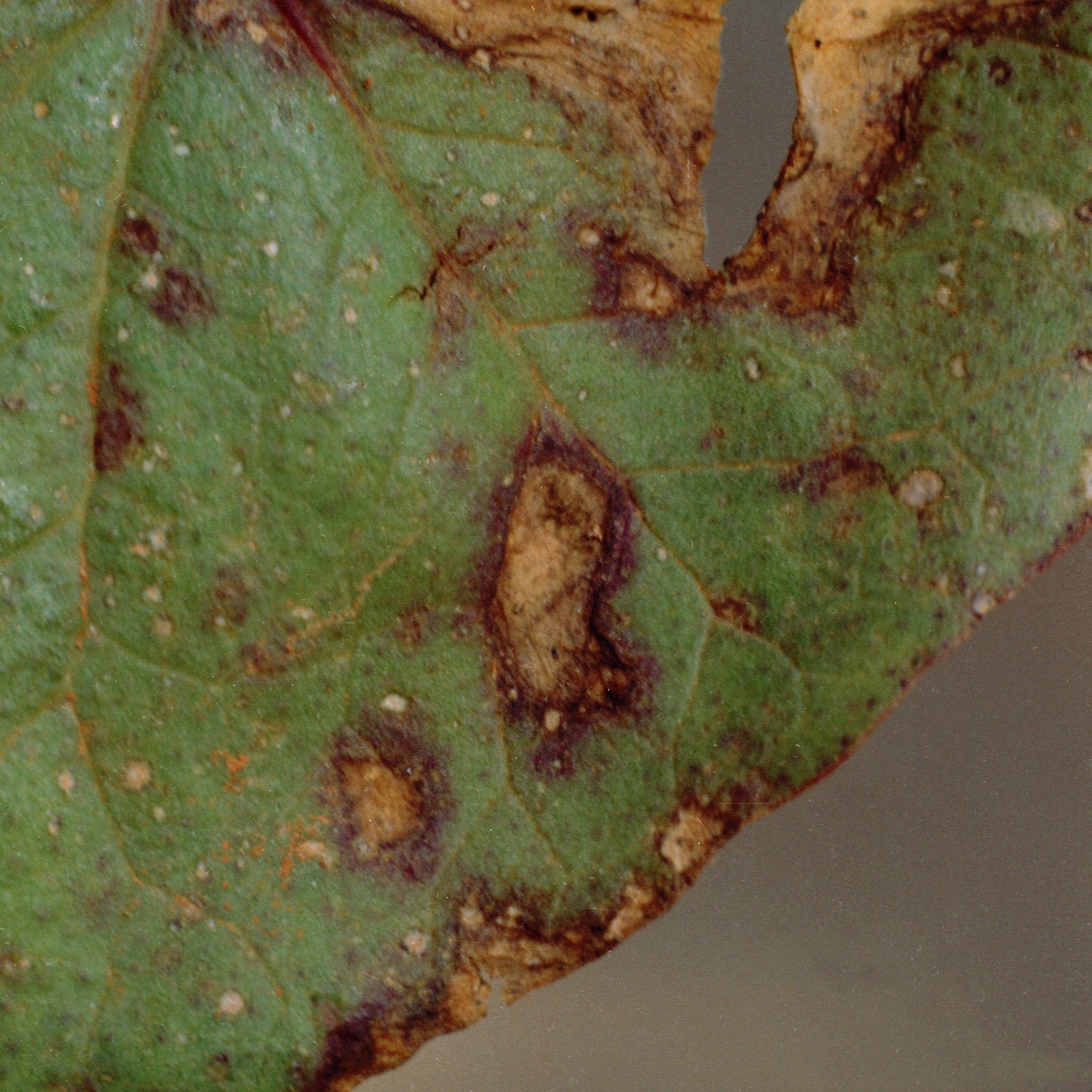
Ascochyta blight
Ascochyta spp.
What is Ascochyta blight (Ascochyta spp.)?
Ascochyta blight (AB) is a fungal disease caused by various species of Ascochyta fungi, including Ascochyta rabiei, Ascochyta fabae f.sp. fabae, Ascochyta fabae f.sp. lentis, and Ascochyta pisi, each species specifically infects its respective crop. It affects pulse crops such as chickpeas, faba beans, lentils, and field peas, leading to yield losses and quality issues. AB has a global distribution and thrives in cool and wet conditions. Symptoms include leaf lesions with brown to black spots (pycnidia) and stem and pod lesions. Severe cases can result in yield losses, premature leaflet drop, and stem dieback.
How does Ascochyta blight (Ascochyta spp.) occur?
Ascochyta blight reproduces through spores called conidia, which are dispersed by wind, rain, or mechanical means. Conidia infect susceptible plants through wounds or natural openings. The fungi form pycnidia within plant tissues, producing more conidia. These conidia spread to new plants, causing infections. The fungi can also survive in infected debris or as dormant structures called sclerotia, ensuring their persistence between seasons and enabling infection of subsequent crops.
Symptoms
1 - Plants Health
• Ascochyta blight, a fungal disease, has detrimental effects on plants. It leads to significant yield losses, causing fewer pods and smaller seeds, ultimately reducing crop productivity. • Moreover, it results in grain discoloration, which negatively impacts the market value and suitability of the crop for consumption or processing.
2 - Soil Health
Pathogen Persistence: Ascochyta fungi survive in infected plant debris or as dormant structures, leading to disease recurrence. The buildup of infected debris impacts soil fertility and can contribute to other soilborne diseases.
Solutions
1 - Cultural Practices and Crop Management
• Rotate crops to allow spores on the soil or crop residue to lose viability. • Plant pulses in paddocks after a specified break to minimize disease carryover. • Remove or bury contaminated trash residue, minimizing wind erosion risks. • Control alternative hosts and weeds that can harbor Ascochyta spores. • Inspect crops regularly to identify disease symptoms early for timely intervention.
2 - Variety Selection and Seed Management
• Plant more tolerant varieties that show resistance or reduced susceptibility to Ascochyta blight. • Some examples of pulse crop cultivars with resistance or tolerance to Ascochyta blight. • Sow clean seeds that are free from Ascochyta contamination. Consider using registered seed treatments to protect against early infection.
3 - Chemical Control
• Several fungicides are available for the control of Ascochyta blight in pulse crops. These include Aviator® Xpro (bixafen and prothioconazole), Quadris® (azoxystrobin), Boscalid-based fungicides (Lance®, Filan®), pyraclostrobin-based fungicides (Cabrio®), and thiophanate-methyl-based fungicides (Topsin®). • It is important to consult local agricultural authorities and follow the guidelines provided by fungicide manufacturers for proper and effective application.
